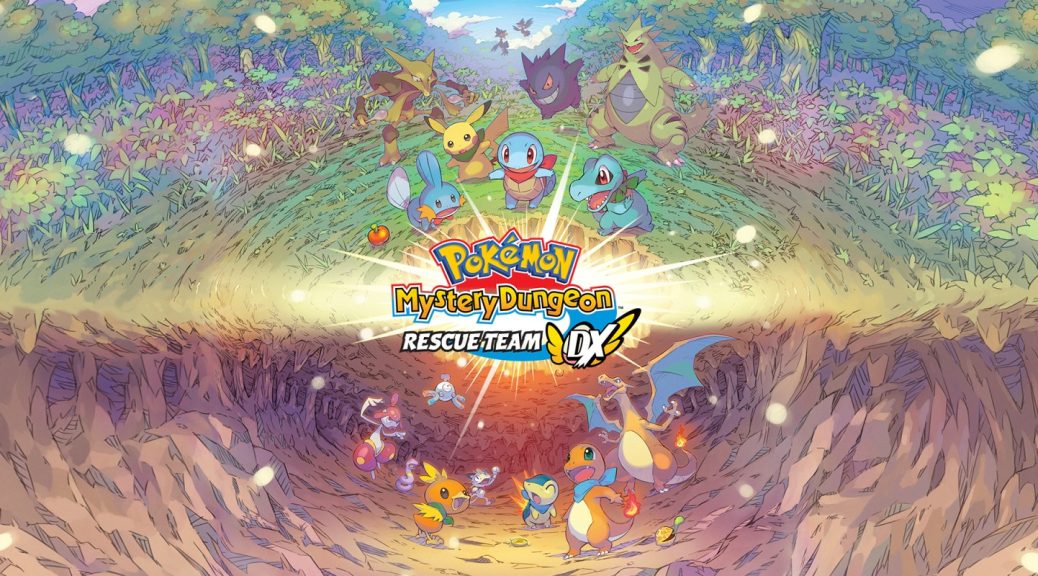
Pokémon Mystery Dungeon: Rescue Team DX
With professional games criticism being so marketing-adjacent, it’s rare to find a game from a major franchise that’s dismissed by critics but beloved by fans. Pokémon Mystery Dungeon is one such example, so I was curious to see which side of the divide I’d land on. Turns out I can fully see both perspectives. From the fan side, the appeal is obvious. Mystery Dungeon provides a less static version of Pokémon’s battle system, which players have always clamoured for. What’s more, it does so with interesting additions and extensive postgame content that the mainline games would kill to have. But on the critical side of things…holy hell, are these games badly designed.
It’s not necessarily apparent at first. The ability to link moves together breathes new life into many status moves, and being able to attack around corners with certain moves adds a wrinkle of depth to combat positioning. Restrictive inventory space and team micromanagement are polarizing but not inherently bad, not to mention par for the course for a traditional roguelike. But while the usual refrain is “good ideas implemented poorly,” Pokémon Mystery Dungeon implements its own ideas just fine; the existing mechanics of Pokémon are the ones it somehow spoils. The most blatantly stupid of these is that evolution, of all things, is locked behind the final boss. In fact, the game has a weird obsession with sequestering things in the postgame: until the credits roll, two of your three party slots are locked into the same Pokémon for story missions.
A knock-on effect of these decisions is that it needs to be possible for a team composed of Skitty, Psyduck, and Geodude to take down a Rayquaza, and the developers’ solution to that was to compress all Pokémon’s stat differences and subsequent damage calculation. Lastly, the importance of type matchups is greatly diminished in favour of being able to attack from as many positions as possible. And while I get that type matchups are often considered simplistic, an 18-option version of Rock, Paper, Scissors is much more complex and interesting than selecting the move that hits two tiles away instead of one. The outcome of all of this is that even when you’re not stuck with the same limited options, all of the options feel the same. And when that’s the case, it doesn’t matter how huge the postgame is, because the game already stopped being fun halfway through the main story.
Rescue Team DX, as a remake, tries to improve things, and at best, it does so in a way that barely makes a difference. You can now switch the Pokémon you’re controlling mid-dungeon from the very beginning, instead of (once again) only after you beat the game. Play speed and convenience have generally been increased, while difficulty has generally decreased. This is pretty expected of modern Pokémon, but the original games were unexpectedly difficult and grindy, so I mostly don’t have a problem with it. Unusually, the max party size has been decreased from four to three, but you can now recruit an additional five guests during a mission, so most levels will end with a swarm of Pokémon disintegrating everything in its path. It’s not remotely balanced, but it’s at least more cathartic than the low-headcount slog.
The remake also adds a charming storybook touch to the visuals, which is probably as close as we’ve ever come to a game using Ken Sugimori’s iconic art style from the first two generations and once again makes me wish any developer other than Game Freak could be put in charge. The audio is mostly a technical improvement, as the original soundtrack is shockingly good – one of the best in the series, in fact. Unfortunately, the interface has, if anything, been made worse through overcomplication. The story is largely unchanged. It’s a little darker and more emotional than most Pokémon games, which I appreciate, even if it has some noticeable gaps. It would later be copied closely (and more poorly) by Legends: Arceus, warts and all, particularly in how it’s an isekai that reveals zero information about the protagonist’s old life.